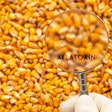
Ontario and Canada’s federal government will help farmers experiencing high levels of deoxynivalenol (DON), a plant disease that affected Ontario’s corn crop this year due to wet weather.
They will provide special assistance to help farmers experiencing revenue loss because of high levels of DON. While the largest portion of Ontario’s corn crop remains unaffected, this support will help ease the impact for affected farmers and assist the entire grain sector in better managing challenges caused by this plant disease in the future.
“We understand the significance of this issue for grain farmers and the agricultural sector at-large,” said Lawrence MacAulay, Federal Minister of Agriculture and Agri-Food. “Under the Canadian Agricultural Partnership, we are able to act quickly to support grain farmers and help address some of the immediate challenges around testing, storage, and handling, while also looking towards long-term solutions to ensure the sustainability and prosperity of our grain sector.”
Through the Canadian Agricultural Partnership, the governments are:
- Opening an application process aimed at covering a portion of eligible farmers’ expenses from testing for DON levels.
- Supporting new projects to help address challenges at different points in the grain sector value chain, such as finding ways to best process or market corn impacted by DON.
- Partnering with the Grain Farmers of Ontario on research and new actions to reduce the frequency and impact of high DON levels, including finding temporary options to store corn to improve grain quality.
“The high DON levels in corn that Ontario farmers are facing is very stressful,” said Barry Senft, CEO of the Grain Farmers of Ontario. “Unmarketable corn and very significant discounts coupled with difficult harvest conditions are creating a market and harvest like none we have seen before. Until we know the full extent of this very challenging situation, it’s good to see the Canadian and Ontario governments commit to providing funding for some tools to help the sector work through this issue.”
While the largest portion of Ontario’s corn crop remains unaffected, the province continues to monitor the scope of the impact and review possible longer-term implications. It is also providing information on best management practices for farmers concerned about the possible impacts of this plant disease on their operations.
















